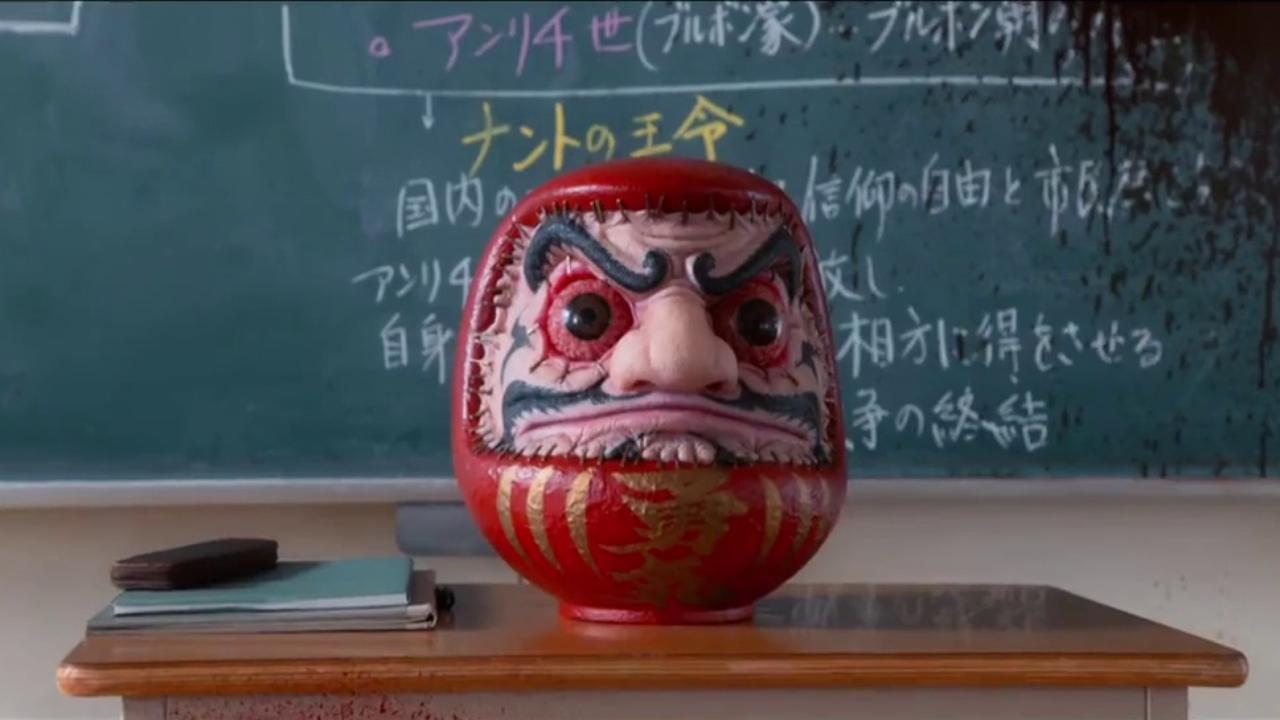
Probably the most world-renowned Japanese cult filmmaker, Takashi Miike is also one of the most prolific, having directed almost 100 films since 1991.
Taking advantage of the “V-Cinema” (straight-to-video films) boom of the 90s, Miike managed to break into the industry, eventually producing “Shinjuku Triad Society” in 1995, his first theatrically distributed film. Since then, he has become one of the most renowned representatives of the category, with fans following every work he produces.
Three elements in his filmography make him so special. The first is his inexhaustible inspiration, with him presenting uniquely unconventional ideas in the majority of his works.
The second is the diversity that characterizes his productions, which vary from extreme splatters, violent exploitation and Yakuza films, to social dramas, musicals, manga adaptations, and remakes of classic samurai films. The third and probably the most important is that his works in their overwhelming majority are either masterpieces or utter failures. They are almost never mediocre.
Unavoidably, with such a vast filmography, among his most famous works like “Audition”, “Ichi the Killer” and “13 Assassins”, there would naturally be productions that are lesser known, even to the hardcore fans of cult film. Here are 15 of them in chronological order.
1. Bodyguard Kiba (1993)
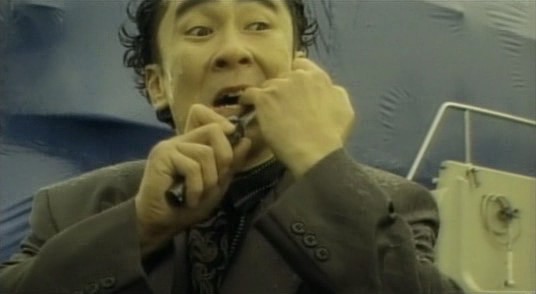
Junpei is a former Yakuza who steals 500 million yen from his boss. He manages to escape their punishment, but still ends up in prison. Five years later, he is released and hires bodyguard Kiba to protect him, promising him part of the money he has stashed away.
On their trip, they are constantly attacked by both Yakuza and students from a dojo who are infuriated by Kiba’s allegations that his karate is better than theirs. Somewhere along the way, the two of them become actual friends, while Junpei persuades Kiba to go search for his girlfriend, whose loyalties are not yet clear.
Miike directs a film that rarely stops, with almost constant action, although his usual gore is missing here. In the brief scenes where the pace is slower, he manages to include the theme of male friendship and even some plot twists.
2. Fudoh: The New Generation (1996)
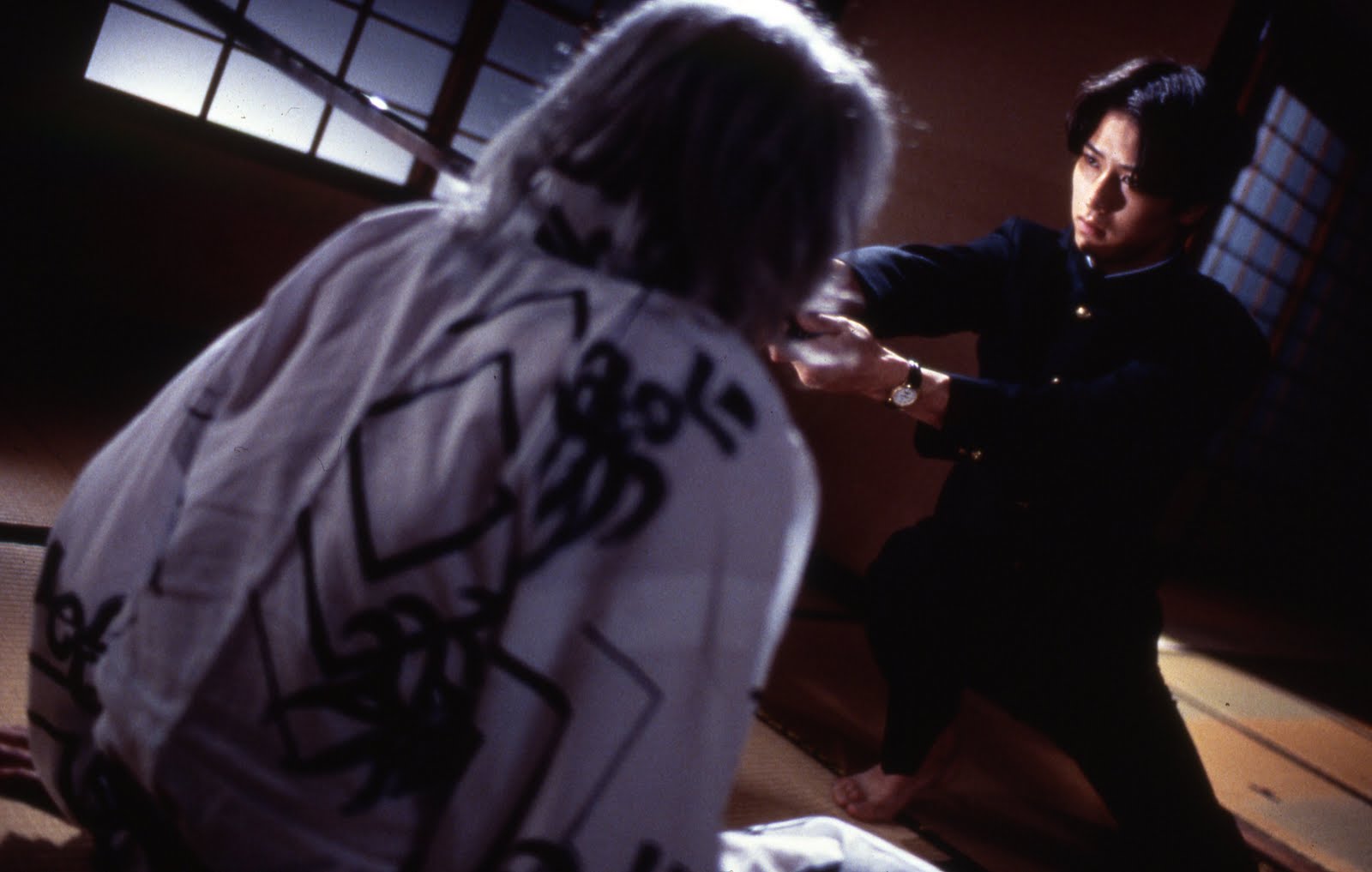
Iwao Fudoh is a Yakuza leader who decapitates his firstborn son for an obscure reason regarding honor. His second son, Riki, is a witness to the event, although it does not seem to bother him. Riki is the leader of a gang of murderous schoolboys and sexy, gun-toting female students. Along with his comrades, he is on the hunt for those he deems responsible for his brother’s death.
However, when his father decides to cooperate with the North Koreans to conquer the world, Riki is forced to go against them and his half-brother.
The film is based on the homonymous manga by Hitoshi Tanimura, and Miike tried to incorporate all of the original’s aesthetics in the film. The result is a movie that is just as outrageous as it is violent, including underage assassins with handguns and a teenage stripper shooting darts from her vagina, not to mention hermaphrodite sex.
“Fudoh” was a prequel of sorts to the path Miike’s career was about to follow, both in terms of style and of success. The film was initially meant to be a straight-to-video release, but the producers liked it so much that they decided to screen it in theaters instead. Furthermore, it was one of his first works that was shown to foreign audiences, and even spawned two sequels that were directed by Yoshiho Fukuoka.
3. Full Metal Yakuza (1997)
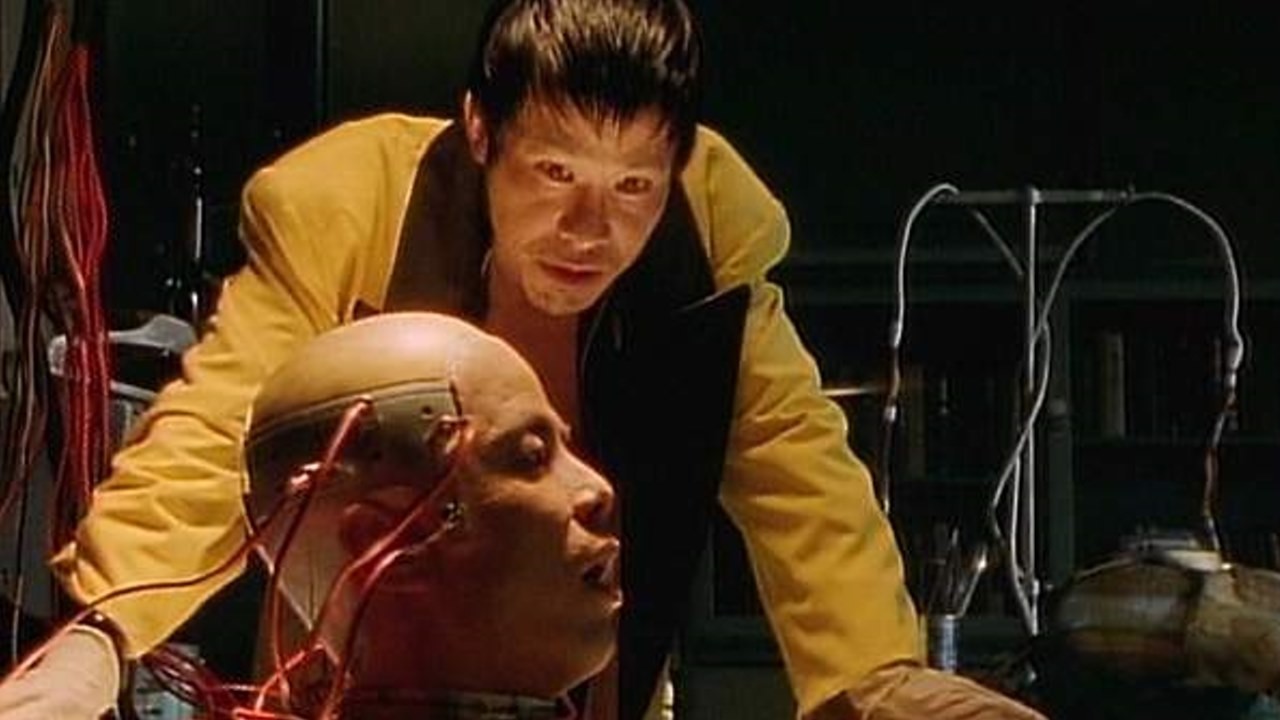
Kensuke Hagane is a Yakuza failure since he is lousy at sex, is constantly beaten in the streets, and even wets himself before each assignment. He idolizes Tosa, who is the epitome of Yakuza and is currently in jail. Upon his release, and along with Kensuke, who was his escort, he is gunned down.
Their corpses end up in the lab of a mad scientist, who manages to combine Kensuke’s head with Tosa’s impressive body (including his huge penis), and even infused it with a bulletproof, metallic exterior, resulting in a half-man half-machine Yakuza. The creature then proceeds to exact revenge.
Placed somewhere between a parody of “Robocop” and “Terminator”, and a revenge Yakuza film, while involving the same manic surrealism presented in “Tetsuo” (with whom they share a protagonist), “Full Metal Yakuza” is a distinct specimen of Miike’s “DTV” films.
As was the case with most of his early films, the story and characters are preposterous, including the decapitated head and the transplant, the non-existent depth, and the female characters who are merely sex objects. Furthermore, the stance Keisuke takes to avoid bullets is utterly hilarious.
His distinct, low-budget aesthetics of his straight-to-video days are quite evident here, in a film that has to avoid being taken seriously in order to be appreciated.
4. Blues Harp (1998)
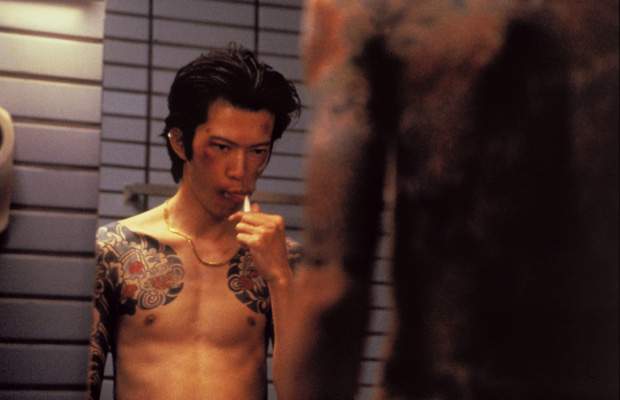
The film revolves around three individuals. The first is Chuji, a bi-racial Japanese man who works as a bartender, although he sells drugs for the local gang on the side. He is also an adept harp player, a fact that very few people know. The second is Kenji, a young and advancing member of the Yakuza. When the local gang is about to kill him, Chuji hides him and saves his life, with the two of them striking up an unusual friendship.
The third is Tokiko, a regular in the bar who Chuji ends up dating. Eventually the girl persuades him to take a shot at playing his harp live in front of an audience.
Probably one of the best films Miike ever made, “Blues Harp” has elaborate characters, plenty of depth, and a great sense of style, not to mention great live blues music. Violence is present once again, although this time it is not an end in itself, but instead a functional part of the story. Lastly, the homosexual notions of the film are presented in a subtle yet clear fashion.
Miike drew great performances from the lead actors, Hiroyuki Ikeuchi as Chuji, Seiichi Tanabe as Kenji, and Saori Sekino as Tokiko, with each character presenting radically different personalities that succeed in resonating artfully within the script.
5. The Bird People in China (1998)
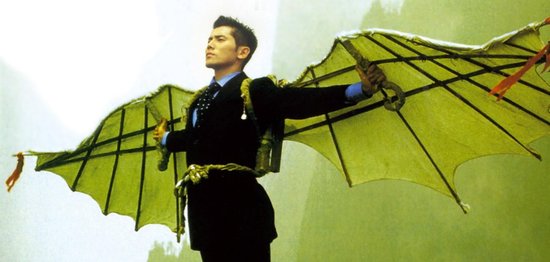
Wada is a white-collar employee of a large corporation that sends him to a remote village in China to investigate a jade deposit. Ujie, a member of the Yakuza, accompanies him to make sure that his organization gets its proper share.
However, during their travel, their guide suffers from amnesia and the two of them end up in a secluded village where the indigenous inhabitants seem to believe that with proper training, every man can fly. Their belief, and the flying teacher, makes a vast impression on both of them and particularly Ujie, who seems to think that he has finally found the meaning of life.
Another peculiar script from Miike that is once more almost void of violence, although the Yakuza element is still present. Masahiro Motoki is the protagonist in the role of Wada, but the one who steals the show is Hitoshi Ozawa as the cruel and violent Ujie, who decides to radically change his life when he meets the people of the village.
The scene with the Chinese children descending the mountain with handmade wings and little bells on their back is one of the most poetic in Miike’s filmography.
6. Dead or Alive (1999)
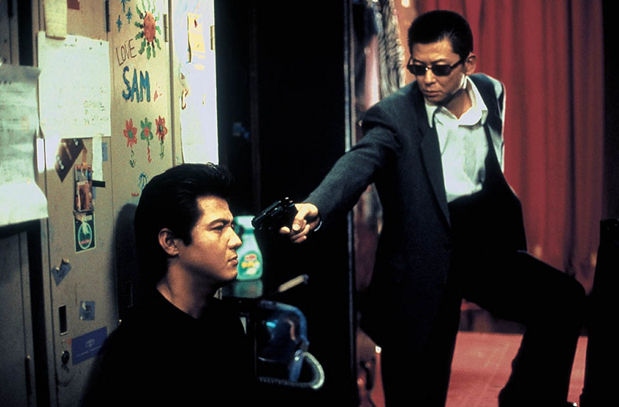
Jojima is a competent police officer who happens to retain connections with the local Yakuza and their leader, Satake. Jojima is about to ask for a loan from him to pay for his daughter’s medical expenses. However, at that point, another outlaw named Ryuichi makes his appearance and proclaims that he intends to take over Shinjuku with his small band of criminals.
Miike directs a Yakuza film that is chiefly characterized by the presence of many anti-heroes and the permeating immorality that rules the Japanese “underworld”. However, these harsh and cruel characters seem to indulge in loving sentiments for mothers, daughters, brothers, and girlfriends, in a notion that mockingly gives a sense of a soap opera.
The first scene, which is filled with color, psychedelics, and violence, and the final one, which is as shocking as it is violent, are the ones that stand out the most.
7. Salaryman Kintaro (1999)
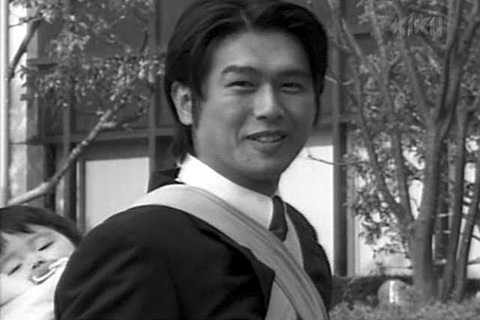
Based on the homonymous manga by Hiroshi Motomiya, the film tells the story of Kintaro, a former thug and leader of a biker gang who has reformed and is now working for a construction company. However, he has not completely abolished his delinquent ways, thus constantly causing problems with his colleagues.
Eventually, the company transfers him to a small rural branch where he, once again, has issues with his superior. However, when they discover the shenanigans of a competing company, they put their differences together, and with the help of Kintaro’s former biker friends, they go all out against them.
Miike once more stayed close to the original source’s aesthetics, but it seems like the non-violent nature of the medium made him uncomfortable, thus resulting in one of the very few mediocre productions of his filmography.
There is a message regarding corporate greed and the enslavement of workers in Japan, but the script spells it out so obviously that it loses its meaning. Furthermore, the final scene with the raid in the enemy’s’ headquarters must be one of the weakest Miike has ever shot. In his defense, however, it was the sixth title he shot that year.